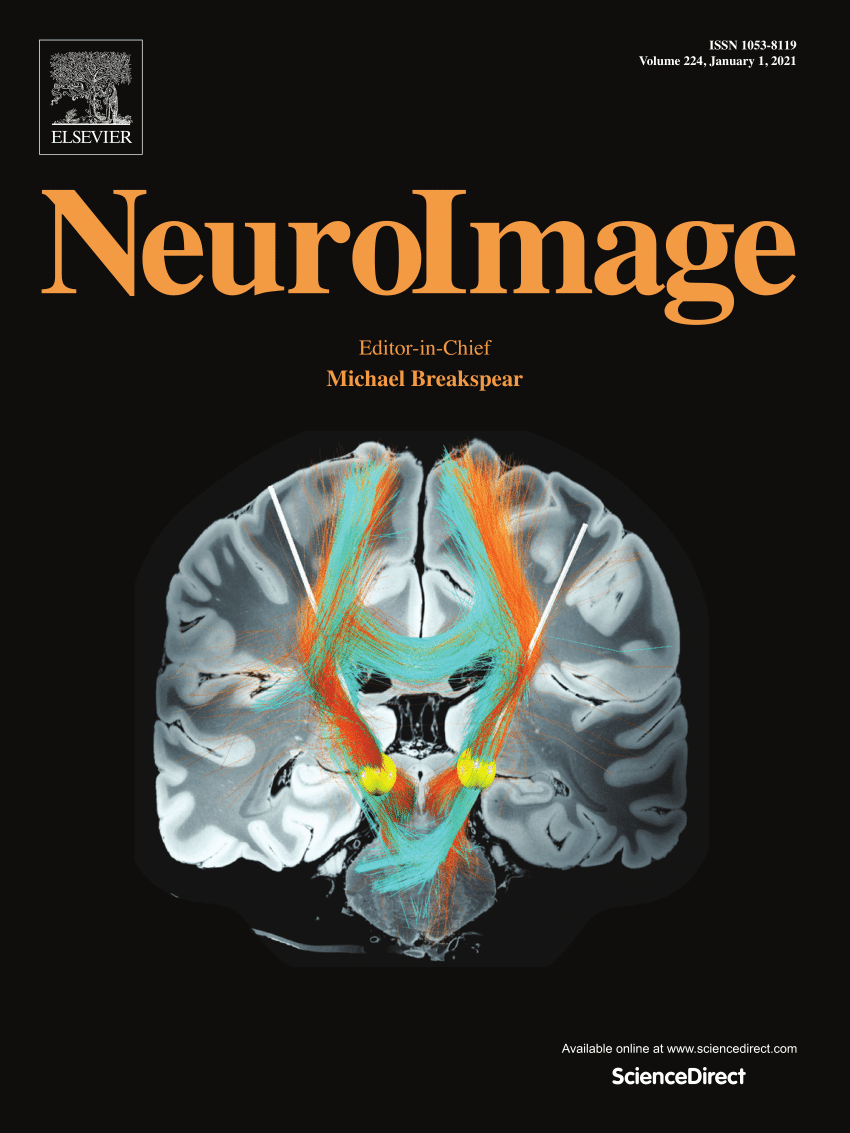Brain short T2 component imaging using double adiabatic inversion recovery prepared ultrashort Echo time (DIR-UTE) sequence
IF 4.7
2区 医学
Q1 NEUROIMAGING
引用次数: 0
Abstract
Short T2 components in the brain are uniquely associated with myelin structure, but direct MR imaging is challenging due to their relatively short T2 values and low proton density compared to long T2 water. This study introduces a novel 3D double adiabatic inversion recovery-prepared ultrashort echo time (DIR-UTE) sequence for selective whole-brain imaging of short T2 components. The sequence employs two identical adiabatic inversion pulses with optimized inversion times (TIs) to suppress long T2 signals, followed by a 3D UTE acquisition to capture rapidly decaying signals. Technical feasibility was evaluated using phantoms, six healthy volunteers, and five patients with multiple sclerosis (MS) on a 3T MRI scanner. Short T2 proton fraction (SPF) was measured in white matter, gray matter, MS lesions, and across the whole brain to assess differences in myelin content. Phantom studies confirmed effective suppression of long T2 signals over a wide range of T1 values. In healthy volunteers, DIR-UTE selectively captured short T2 signals, with an estimated T2* of 0.21±0.01 ms in white matter. SPF in normal white matter (5.12±0.57 %) was significantly higher than in normal-appearing white matter (4.06±0.61 %, P < 0.0001) and MS lesions (2.76±0.78 %, P < 0.0001). Similar trends were observed in gray matter. Whole-brain analysis also showed lower average SPF in MS patients (3.42±0.38 %) compared to healthy controls (4.01±0.35 %, P < 0.0001). These results demonstrate the DIR-UTE sequence's ability to suppress long T2 signals and selectively image short T2 components, with SPF emerging as a potential biomarker for demyelinating diseases like MS.
利用双绝热反演恢复制备超短回波时间序列(DIR-UTE)进行脑短T2分量成像。
大脑中的短T2成分与髓鞘结构独特相关,但与长T2水相比,由于其相对较短的T2值和较低的质子密度,直接磁共振成像具有挑战性。本研究介绍了一种新型的三维双绝热反演恢复制备的超短回波时间(DIR-UTE)序列,用于选择性全脑短T2组分成像。该序列采用两个具有优化反演时间(TIs)的相同绝热反演脉冲来抑制长T2信号,然后采用3D UTE采集来捕获快速衰减的信号。技术可行性评估使用幻影,6名健康志愿者和5名多发性硬化症(MS)患者在3T MRI扫描仪上。在白质、灰质、MS病变和整个大脑中测量短T2质子分数(SPF),以评估髓磷脂含量的差异。幻影研究证实了在大范围T1值范围内有效抑制长T2信号。在健康志愿者中,DIR-UTE选择性捕获短T2信号,在白质中估计T2*为0.21±0.01 ms。正常白质的SPF值(5.12±0.57%)明显高于正常白质的SPF值(4.06±0.61%),P2信号和选择性图像短T2成分,SPF值有望成为MS等脱髓鞘疾病的潜在生物标志物。
本文章由计算机程序翻译,如有差异,请以英文原文为准。
求助全文
约1分钟内获得全文
求助全文
来源期刊

NeuroImage
医学-核医学
CiteScore
11.30
自引率
10.50%
发文量
809
审稿时长
63 days
期刊介绍:
NeuroImage, a Journal of Brain Function provides a vehicle for communicating important advances in acquiring, analyzing, and modelling neuroimaging data and in applying these techniques to the study of structure-function and brain-behavior relationships. Though the emphasis is on the macroscopic level of human brain organization, meso-and microscopic neuroimaging across all species will be considered if informative for understanding the aforementioned relationships.
 求助内容:
求助内容: 应助结果提醒方式:
应助结果提醒方式:


